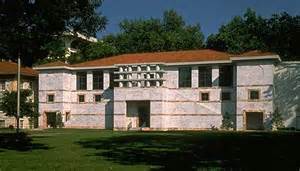Mar 19 2016 - Nov 27 2016
Michael C. Carlos Museum at Emory University
Atlanta, GA
In Doorway to an Enlightened World visitors to the Carlos Museum will encounter compelling works of Tibetan Buddhist art, not displayed as individual, unconnected pieces but presented in their proper sacred context, regarded as a “doorway” into a higher world. Among the most impressive objects in the collection are large, gilt-bronze Buddhas and bodhisattvas dating from the fifteenth through the eighteenth centuries; a Mongolian silver Buddha with seashell and coral adornments; a gilded bronze of the goddess Tara with a gem-encrusted crown; and jewelry, attributes, and thangkas framed within their original silk brocade complete with the original finials.
The works of art in the Kandell Shrine, created in artistic centers on the Tibetan Plateau as well as in China and Mongolia, are arranged in a religiously appropriate manner; ritual implements are placed on lower tables while images of the Buddha appear in the highest, most prominent positions. Shrine rooms are considered sacred spaces by practicing Buddhists. Monks and lamas have used the Kandell Shrine for contemplation and meditation; the Dalai Lama has blessed many of the objects within it.
Credit: Exhibition overview from museum website
Tibetan Buddhists see the world in two realities, of relative and absolute: the relative world is experienced as either the ordinary world of samsaric suffering or the extraordinary state of universal bliss and fulfillment. The enlightened understand their essential oneness with the universe and feel the relief of a blissful connection to everything. Whether you go or not, the exhibition catalog, A Shrine for Tibet: The Alice S. Kandell Collection of Tibetan Sacred Art, is a beautifully illustrated celebration of this philosophy through Alice Kandell's incredible collection of art from the 15th Century Ganden Renaissance right through to the 17th Century building of the Potala Palace, and into the 18th and 19th Centuries, where Mongolian and Manchu Qing Buddhist art bloomed in the Tibetan tradition.
Exhibition Venues & Dates
Mar 19 2016 - Nov 27 2016
Michael C. Carlos Museum at Emory University
Atlanta, GA

